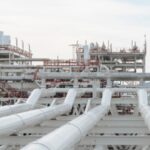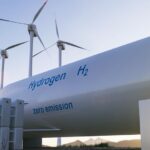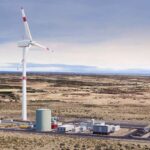In the United States, Argonne National Laboratory has partnered with Constellation Energy Corp to develop hydrogen production technologies. Bloom Energy has announced plans to produce hydrogen at a nuclear power plant in Minnesota. Meanwhile, DOE has opened applications for a $7 billion program to create regional clean hydrogen centers.
Hydrogen from nuclear energy in the United States
The new cooperative research and development agreement between Argonne and Constellation aims to assess trends in the U.S. energy system and develop technologies for more efficient, carbon-free energy.
One of the projects supported under the agreement, which runs through October 2028, will focus on the use of hydrogen from nuclear energy to store and transmit energy for transportation and various other applications.
Researchers from both companies are already working to assess the market demand for hydrogen. They also seek to define the environmental and economic impacts of hydrogen production, storage and delivery.
Colleen Wright, Constellation’s vice president of corporate strategy, says:
“Clean hydrogen produced from carbon-free nuclear has the power to transform hard-to-decarbonize industries. By combining Constellation’s leading carbon-free energy resources with Argonne National Laboratory’s electrolysis technologies and technical expertise, we have the opportunity to provide real-world solutions to combat the growing threats of climate change.”
An electrolyser for Prairie Island
Bloom Energy announces plans to install an electrolyzer at Xcel Energy’s Prairie Island nuclear power plant in Minnesota, USA. According to the company, this technology will create “immediate and scalable pathways to produce clean, cost-effective hydrogen.”
Bloom’s solid oxide electrolyzer operates at high temperatures to convert water into hydrogen. It will use the heat and steam generated by the nuclear facility to produce carbon-free hydrogen.
Engineering for the 240 kW demonstration is underway. Construction is scheduled to begin in late 2023 and energization is expected in early 2024.
The development of hydrogen clusters
Earlier this year, the DOE announced plans to develop regional clean hydrogen centers – H2Hubs – as part of the bipartisan infrastructure legislation. The objective is to create networks of hydrogen producers, consumers and local connection infrastructures.
The $7 billion funding opportunity announced is part of the larger $8 billion hydrogen hub program funded by President Biden’s bipartisan infrastructure legislation. According to Jennifer Granhol, Secretary of Energy, this is a unique opportunity to lay the foundation for the future of clean hydrogen in the United States.
For this initial launch of the funding opportunity, DOE aims to select six to ten hubs across the United States. Additional funding opportunities may also follow to accelerate and expand the network of clean hydrogen projects.











